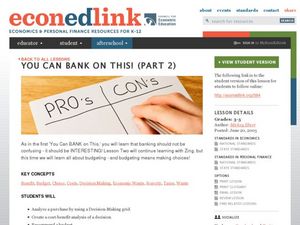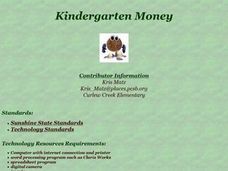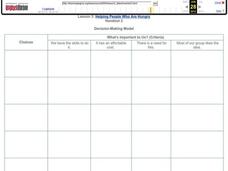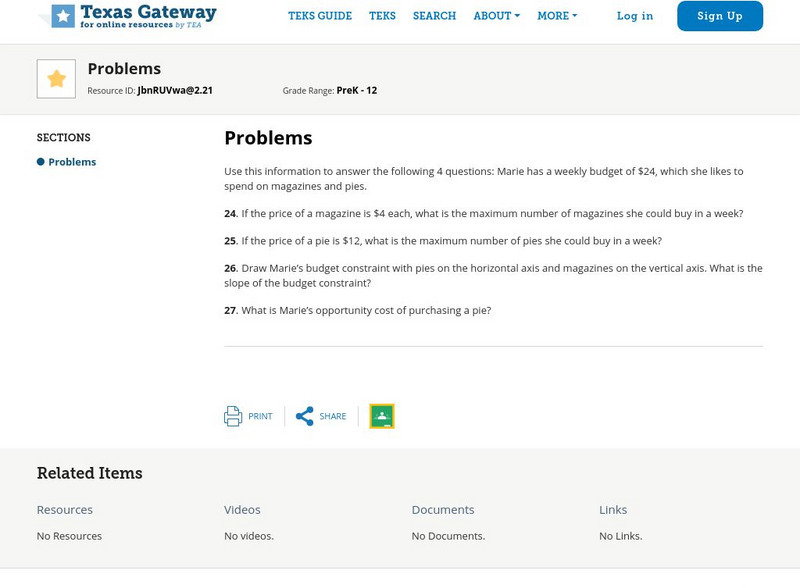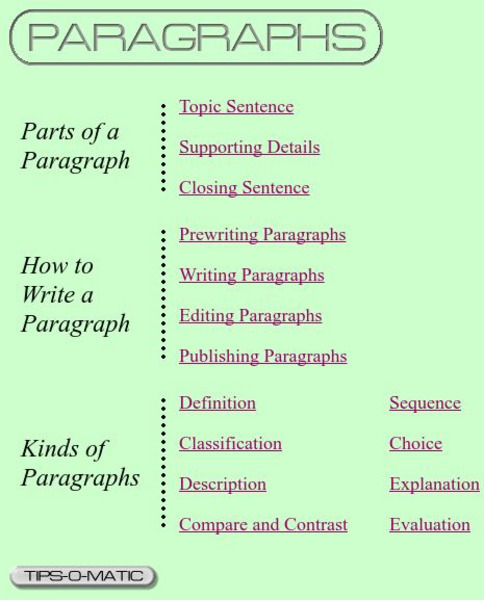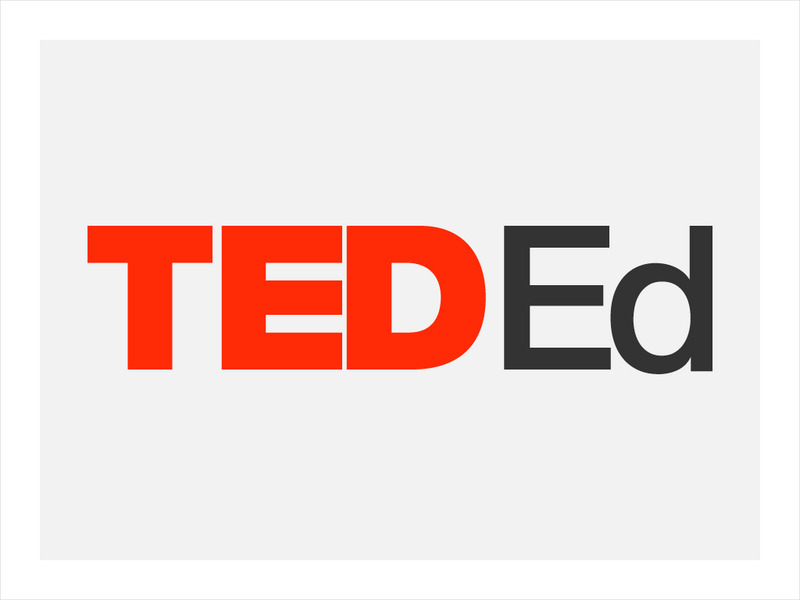Council for Economic Education
You Can BANK on This! (Part 2)
This is part two in a four-part instructional activity on banking and personal finance. For this instructional activity, learners analyze whether or not they have made a good purchase, then discuss how to make an informed decision about...
National Council of Teachers of Mathematics
The Game of SKUNK
Do I stand or do I sit? The class plays a dice game where they must decide to either continue to stand and play or sit down and keep their points. After the game, groups discuss individuals' strategies and see connections to the...
Curated OER
Something from Nothing
Students identify opportunity costs. In this resources lesson plan students are read the story Something from Nothing by Phoebe Gilman. Students list the things Grandpa makes Joseph. Students state why people make choices.
Curated OER
Give and Take
Students analyze a scheduling dilemma. In this opportunity cost and trade-offs instructional activity, students must schedule the school gym for basketball games, but there are not enough hours for all the games. Groups determine how...
Curated OER
Kindergarten Money
Students identify the various coins and their values through presentations, a rubric, a value pretest, and coin manipulatives. Money is incorporated into various activities whether at home or in school. Students create money webs using...
Curated OER
Emulating Shakespeare: To Snooze or Not To Snooze
Students reproduce the pattern of one of Shakespeare's soliloquies, but use their own ideas and words to replace the character's. They replace each word with a word of their own that serves the same purpose.They discuss the speaker in a...
Curated OER
How E-Commerce Influences Consumer Choice
Class members gather information on different brands of athletic shoes to determine which is the best buy. They identify a toy they would like to buy, and gather comparative information from a store, a catalog, and three websites.
Curated OER
Decision-Making Model
In this decision making worksheet, students fill out the choices, skills, cost, and more when making decisions. Students fill out 25 boxes total.
Curated OER
Making Good Decisions
Students practice reasonable decision making and anticipate the consequences of their choices. In this consequences instructional activity students discuss trade offs and how to solve problems.
Curated OER
Making Good Decisions
Students examine the consequences of behaviors and what the concept of trade offs are. In this good decision lesson students read an article and answer questions on making good decisions.
Curated OER
Making Good Decisions
Learners practice the skill of decision making and anticipate the consequences of their choices. In this consequences lesson students complete several worksheets.
Curated OER
What is a Stock? or, Who Owns McDonald's?
Students explore profit and risk. In this economics lesson, students read about McDonald's and Nabisco stock and discuss the risks and rewards of stock ownership. Printable worksheets ask questions about rights of stock owners and the...
Curated OER
The Right Stuff: Getting Personal
In this writing worksheet, students identify five things that they like about themselves. They write what their best friend would say they like the most and what makes them proud of who they are. Finally, students identify what they are...
Curated OER
The Essential Brick
Learners examine their position within their school and discuss qualities they need to be productive citizens outside of school. they culminate the unit by writing an autobiography that includes the concepts of responsibility, choice,...
TED Talks
Ted: Ted Ed: Malcolm Gladwell on Spaghetti Sauce
Malcolm Gladwell discusses the food industry's quest for the perfect spaghetti sauce, and takes a bigger look at the nature of choice and happiness. [17:34]
Texas Education Agency
Texas Gateway: Ch. 2: Choice in a World of Scarcity: Critical Thinking Questions
This is a list of five critical thinking questions based on content presented in Chapter 2: Choice in a World of Scarcity from the TEA AP Macroeconomics online text.
Texas Education Agency
Texas Gateway: Chapter 2: Choice in a World of Scarcity: Review Questions
This is a set of 11 review questions based on the content covered in Chapter 2: Choice in a World of Scarcity from the TEA AP Macroeconomics online text.
Texas Education Agency
Texas Gateway: Chapter 2: Choice in a World of Scarcity: Problems
This page poses a situation which is followed by four problems to solve. They are based on information in Chapter 2: Choice in a World of Scarcity from the TEA AP Macroeconomics online text.
Robert Schenk, PhD
Cyber Economics: Scarcity and Choice
This site from the St. Joseph's College examines the importance of scarcity and choice in terms of an economic system. A further explanation explores how various people have constructed utopias to assume away the problem of scarcity.
ACT360 Media
Writing Den: Paragraphs
How do you write a paragraph? Use this site to learn more about the different parts of a paragraph.
TED Talks
Ted: Ted Ed: The Psychology Behind Irrational Decisions
Often people make decisions that are not "rational" from a purely economical point of view. Sara Garofalo explains heuristics, problem-solving approaches based on previous experience and intuition rather than analysis. [4:39]
TED Talks
Ted: Ted Ed: Our Buggy Moral Code
Behavioral economist Dan Ariely studies the bugs in our moral code: the hidden reasons some think it's OK to cheat or steal. Clever studies help make his point that we're predictably irrational- and can be influenced in ways we can't...
Council for Economic Education
Econ Ed Link: Marketplace: Doing Business in Afghanistan
In May 2002, delegates from governments, international companies, and financial institutions met at a United Nations conference in Tehran to discuss the reconstruction of Afghanistan. Afghanistan's officials say that to create a viable...
Council for Economic Education
Econ Ed Link: Marketplace: Real(ity) Estate
This lesson teaches students about opportunity cost through some steps of buying a house. It also shows students how advertising affects consumer decision-making.


